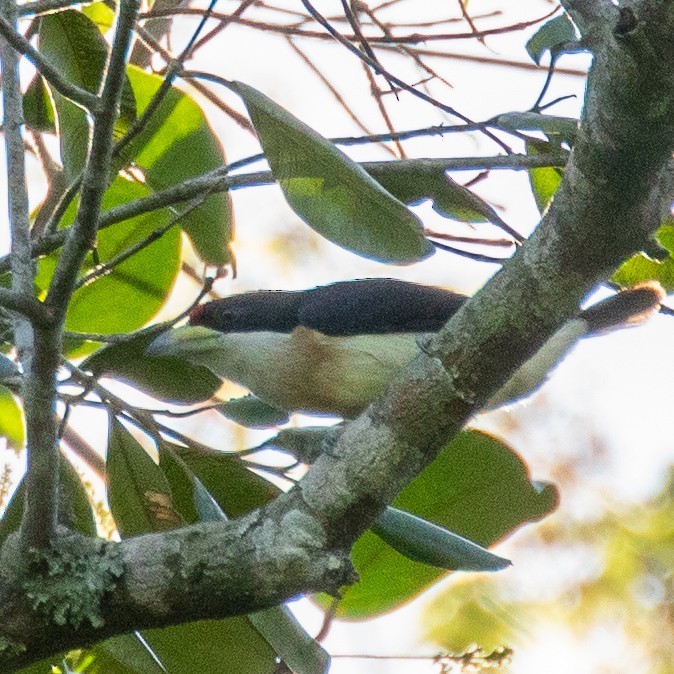White-mantled Barbet
A species of Gray-billed New World Barbets Scientific name : Capito hypoleucus Genus : Gray-billed New World Barbets
White-mantled Barbet, A species of Gray-billed New World Barbets
Botanical name: Capito hypoleucus
Genus: Gray-billed New World Barbets
Content
Description General Info
 Photo By Steve McInnis
Photo By Steve McInnis Description
One of the larger barbets, with an average length of 19cm. The bird has black upperparts with narrow pale lines on the nape and scapulars. These lines are not easy to see because the bird is mostly observed higher up in the canopy of tall trees. The forehead and crown are red. The bird's underparts are white with a slight yellowish wash and a flush of cinnamon on the breast. They eyes are red, the large, chunky bill is yellowish, and the legs and feet are greenish-grey. Females have a black spot at the base of the lower mandible. 
Size
19 cm
Nest Placement
Cavity
Feeding Habits
White-mantled Barbet forages in pairs or family groups, primarily consuming fruit from trees like mango and Cecropia. They adapt their feeding behavior to join mixed-species flocks and navigate from forest canopies to fruiting trees.
Habitat
The white-mantled Barbet inhabits a range of forested environments, predominantly preferring fragmented lower montane moist forests. It can also be found within secondary forests, forest edges, and agricultural areas such as cacao and coffee plantations that support fruiting trees, which are crucial for its feeding habits. These birds are typically associated with regions featuring dense vegetation and a moist climate.
Dite type
Frugivorous
General Info
Feeding Habits
Bird food type

Fruit
Distribution Area
The white-mantled barbet is found in the Middle Magdalena Valley of Colombia at altitudes between 200 and 1800m. It is a bird of the tropical zone, inhabiting humid forests on montane slopes, forest patches with a mosaic of pastures, secondary forest and plantations mixed with fruiting trees. 
Species Status
The white-mantled barbet population is declining, primarily due to habitat loss. The IUCN Red List classifies the species as Vulnerable. The Red Book of the Birds of Colombia, noting that the species has lost 60% of its historic habitat and that that habitat continues to decrease, lists the bird as Endangered. The primary causes of this habitat loss are illicit cultivation, overuse of insecticides, and small-scale gold mining. 

 Photo By Steve McInnis
Photo By Steve McInnis